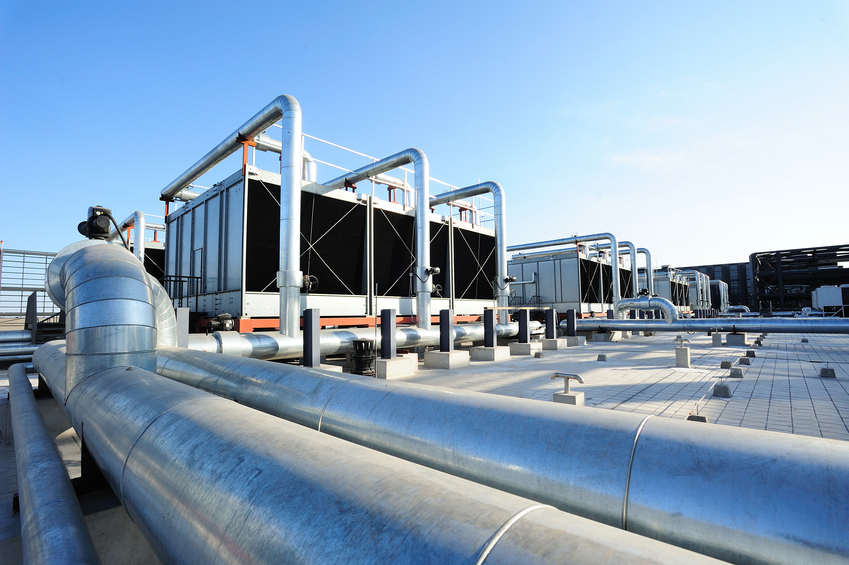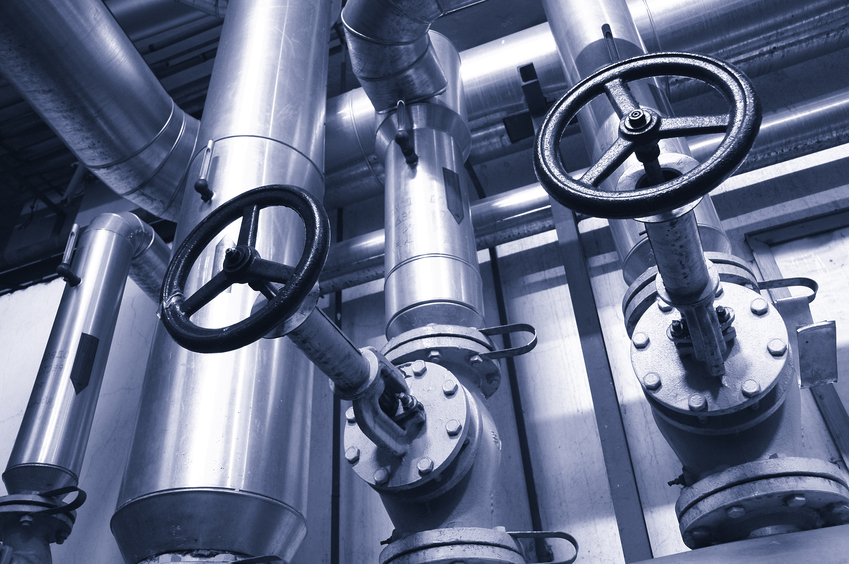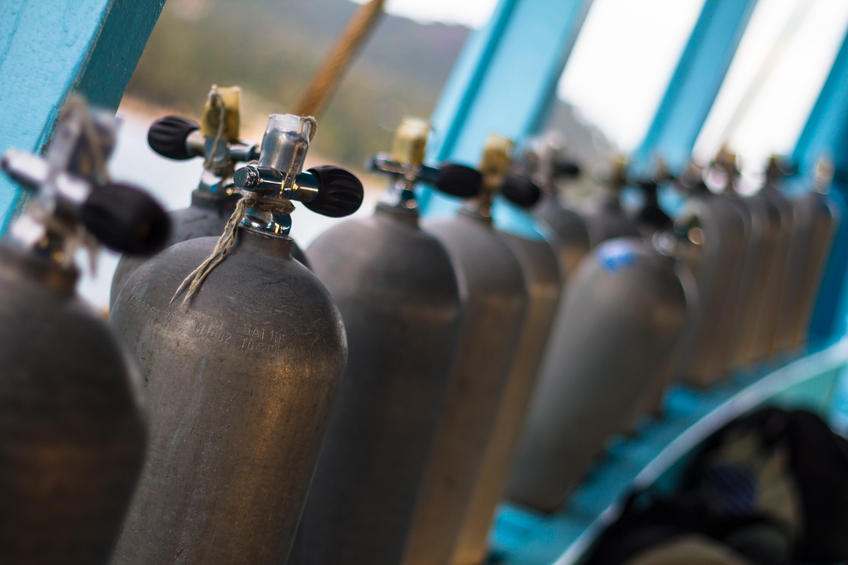Ohio Mechanical and Ethics 30 PDH Discount Package 3
Liquid Process Piping, Part 1: General Piping Design (M03-023)
Plug-and-Play Ducting System (M07-007)
Boiler Basics, Operation and Maintenance (M08-009)
Installing Seismic Restraints for Mechanical Equipment (S05-008)
Overview and Maintenance of Compressed Air Systems (M02-063)
General Principles of Engineering Ethics (LE2-016)

This online engineering PDH course provides an overview of the purpose, types and operation of several basic mechanical components.
These components which include air compressors, boilers, cooling towers, steam traps, filters and strainers; are found at the heart of many plants and have widespread applications in several industries.
This 3 PDH online course is applicable to mechanical and industrial engineers, operators, maintenance personnel, and other technical staff who are interested in gaining a better understanding of the operation of the different mechanical equipment.
This PE continuing education course is intended to provide you with the following specific knowledge and skills:
- Understanding the various types of air compressors, operation and safety hazards
- Familiarizing with boilers
- Learning the purpose of the cooling tower and its various types
- Learning the fundamentals of steam traps and their different types
- Distinguishing between filters and strainers and learning their different types
Upon successful completion of the quiz, print your Certificate of Completion instantly. (Note: if you are paying by check or money order, you will be able to print it after we receive your payment.) For your convenience, we will also email it to you. Please note that you can log in to your account at any time to access and print your Certificate of Completion.

This online engineering PDH course presents general piping design calculations and requirements for all piping systems regardless of construction material. Most of these calculations and requirements are provided and regulated by the ASME B31.3 code, respectively.
The liquid process piping manual provides information for the design of liquid process piping systems including all pipe and appurtenances which are used to convey liquids to, from and between pumping, storage and treatment units but which are not integral to any unit.
This 3 PDH online course is applicable to engineers, designers, contractors, building professionals, maintenance personnel, and manufacturers who are interested in gaining a better understanding of general piping design of liquid process piping.
This PE continuing education course is intended to provide you with the following specific knowledge and skills:
- Understanding the properties of construction materials
- Understanding the characteristics of the design pressure
- Learning how to size piping systems
- Understanding the stress analysis of piping systems
- Familiarizing with pipe components such as flanges, gaskets and bolting
- Understanding how pipe components affect the piping design
- Understanding how to properly identify piping
- Understanding the basics of piping supports
- Familiarizing with the different testing and flushing methods for piping systems
In this professional engineering CEU course, you need to review Chapter 3, "General Piping Design" of the "Liquid Process Piping" engineering manual, published by the United States Army of Corps of Engineers (USACE), Publication Number EM 1110-1-4008.
Once you complete your course review, you need to take a multiple-choice quiz consisting of twenty (20) questions to earn 3 PDH credits. The quiz will be based on Chapter 3 of this USACE publication.
Upon successful completion of the quiz, print your Certificate of Completion instantly. (Note: if you are paying by check or money order, you will be able to print it after we receive your payment.) For your convenience, we will also email it to you. Please note that you can log in to your account at any time to access and print your Certificate of Completion.

This online engineering PDH course provides a comprehensive evaluation of the Plug-and-Play (PnP) duct system for residential HVAC applications.
This course explores the challenges of traditional ductwork and the growing demand for streamlined efficient air distribution systems in today’s energy-efficient homes. It introduces a simplified, home-run style air delivery system that uses uniformly sized, small-diameter ducts connected to a central manifold which significantly improve ease of design and installation over conventional trunk-and-branch systems. This course provides a newly developed design methodology for PnP air delivery system supported by practical guidance documents for straightforward field implementation. It also covers comprehensive material and cost comparisons, results from laboratory and field testing, and performance modeling using EnergyPlus. Additionally, it addresses building code compliance challenges and includes valuable industry feedback from builders, manufacturers, and code officials.
This 7 PDH online course is applicable to mechanical engineers, HVAC professionals, and building designers interested in innovative PnP air delivery systems for energy-efficient homes.
This PE continuing education course is intended to provide you with the following specific knowledge and skills:
- Understanding the challenges in traditional duct systems and the need for simplified, efficient air distribution in modern energy-efficient homes
- Developing a straightforward design methodology and companion guidance documents to produce plug-and-play (PnP) air delivery system
- Learning a new approach for designing home-run style duct systems using standardized, small-diameter ducts from a central manifold
- Demonstrating the advantages of the simplified air delivery system compared to traditional trunk-and-branch residential duct systems
- Analyzing the impact of different parameters such as duct size, layout and internal gains on system optimization
- Identifying current building code challenges and exploring strategies for advancing the PnP system toward market readiness
Upon successful completion of the quiz, print your Certificate of Completion instantly. (Note: if you are paying by check or money order, you will be able to print it after we receive your payment.) For your convenience, we will also email it to you. Please note that you can log in to your account at any time to access and print your Certificate of Completion.

This online engineering PDH course provides information on steam generation, types of boilers pertinent to engineering operations, and the various fittings and components commonly found on boilers.
The boiler is an enclosed vessel in which water is heated and circulated, either as hot water or steam, to produce a source for either heat or power. A central heating plant may have one or more boilers that use gas, oil, or coal as fuel. The steam generated is used to heat buildings, provide hot water, and provide steam for cleaning, sterilizing, cooking, and laundering operations. Small package boilers also provide steam and hot water for small buildings.
A boiler must also meet certain requirements before it is considered satisfactory for operation. The boiler must be safe and economical to operate, and it must be able to generate steam at the desired rate and pressure.
This 8 PDH online course is applicable to mechanical engineers and professionals who are interested in learning more about the operation, maintenance, and repair of boilers used in various engineering applications.
This PE continuing education course is intended to provide you with the following specific knowledge and skills:
- Familiarizing with the steam generation theory
- Understanding boiler design requirements
- Learning about the different types of boilers, their fittings and accessories
- Identifying the automatic controls associated with boilers
- Learning about the different types of instruments and meters
- Knowing the procedures associated with boiler water treatment and cleaning
- Gaining an overview of the procedures associated with boiler maintenance
Upon successful completion of the quiz, print your Certificate of Completion instantly. (Note: if you are paying by check or money order, you will be able to print it after we receive your payment.) For your convenience, we will also email it to you. Please note that you can log in to your account at any time to access and print your Certificate of Completion.

This online engineering PDH course provides guidelines on how to attach mechanical equipment to a building to minimize earthquake damage. It presents examples of anchoring and using special devices called seismic restraint devices. These devices include vibration isolation systems, cable or strut suspension systems, roof attachment systems and steel shapes.
This 5 PDH online course is applicable to structural and mechanical engineers, architects, contractors, building professionals, and other technical personnel dealing with the planning, design and installation of mechanical equipment.
This PE continuing education course is intended to provide you with the following specific knowledge and skills:
- Identifying mechanical equipment and selecting the appropriate method for its installation
- Familiarizing with the different types of attachments
- Familiarizing with the various types of anchors
- Understanding the different methods of supporting control panels
- Understanding the various methods of attaching HVAC equipment to residential structures
- Learning how to design housekeeping pads for seismic measures
In thisprofessional engineering CEU course, you need to review the publication "Installing Seismic Restraints for Mechanical Equipment" (FEMA 412), published by the Federal Emergency Management Agency.
Upon successful completion of the quiz, print your Certificate of Completion instantly. (Note: if you are paying by check or money order, you will be able to print it after we receive your payment.) For your convenience, we will also email it to you. Please note that you can log in to your account at any time to access and print your Certificate of Completion.

This online engineering PDH course provides an overview of air compressor systems, their design, and the components that make up a system. It also provides the means of identifying and directing the proper construction techniques for installation of various components, as well as an understanding of the maintenance of previously installed systems.
Compressed air is a form of power that has many important uses in industrial activities. An air compressor plant is required to supply air of adequate volume, quality, and pressure at the various points of application. These plants or systems are classified as low-pressure, medium-pressure, or high-pressure systems.
This 2 PDH online course is applicable to mechanical engineers and other professionals who are interested in learning more about compressed air systems.
This PE continuing education course is intended to provide you with the following specific knowledge and skills:
- Familiarizing with the classifications of compressed air systems
- Understanding the air quality requirements
- Learning about the components of air compressors and the auxiliary equipment
- Knowing the different types of distribution systems
- Gaining an overview of the maintenance requirements associated with air compressor systems
Upon successful completion of the quiz, print your Certificate of Completion instantly. (Note: if you are paying by check or money order, you will be able to print it after we receive your payment.) For your convenience, we will also email it to you. Please note that you can log in to your account at any time to access and print your Certificate of Completion.

This online engineering PDH course presents the principles of engineering ethics that every engineer is expected to live by when practicing their profession.
Engineering ethics is (1) the study of moral issues and decisions confronting individuals and organizations involved in engineering and (2) the study of related questions about moral conduct, character, ideals and relationships of peoples and organizations involved in technological development (Martin and Schinzinger, Ethics in Engineering).
This course describes the fundamental legal concepts with which very engineer should be familiar. It also presents unique disciplinary case studies selected from across the nation, as well as hypothetical ethical challenges that demonstrate how difficult it can be to apply the code of ethics for engineers.
This 2 PDH online course is applicable to all professional engineers who are either required to fulfill 2 PDH in engineering ethics or are interested in broadening their understanding of what it means to practice and uphold the honor and integrity of their engineering profession while holding the utmost safety, health, and welfare of the public.
This PE continuing education course is intended to provide you with the following specific knowledge and skills:
- Understanding the common definition of ethics regarding engineering
- Learning about the important principles of the engineer’s professional responsibility
- Learning the do’s and don’ts through several ethical and disciplinary cases
- Understanding what it means to practise and uphold the honor and integrity of the engineering profession
Upon successful completion of the quiz, print your Certificate of Completion instantly. (Note: if you are paying by check or money order, you will be able to print it after we receive your payment.) For your convenience, we will also email it to you. Please note that you can log in to your account at any time to access and print your Certificate of Completion.